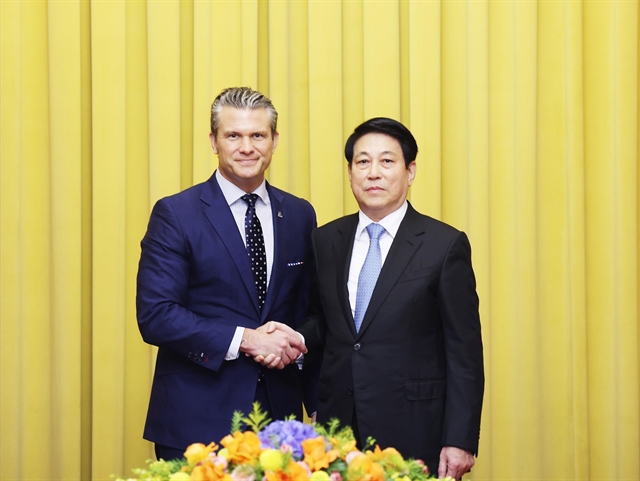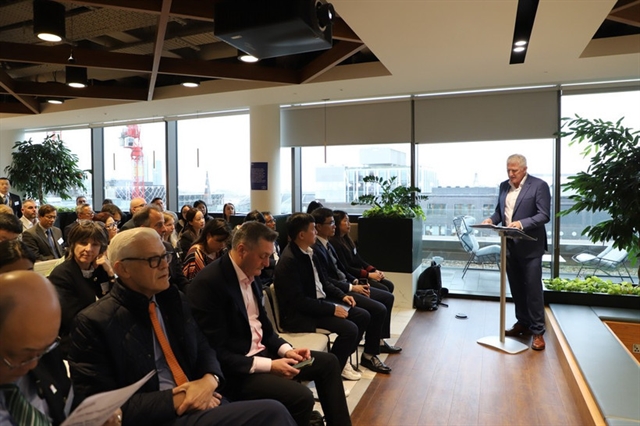 Sunday/Weekend
Sunday/Weekend
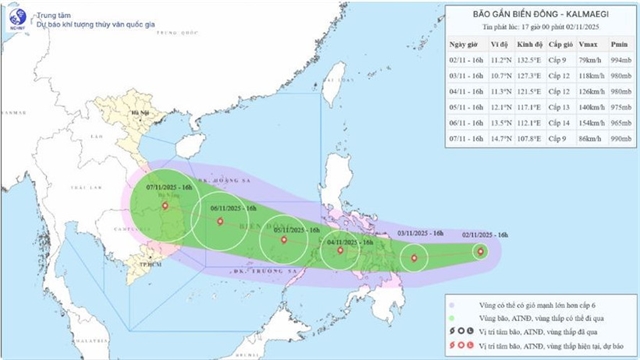
Ten countries, dozens of fables, scores of cultural symbols, hundreds of places to visit and thousands of delicacies to relish – diversity flourishes across this region of over 628 million people. Here are some interesting facts about the regional grouping’s members.
Ten countries, dozens of fables, scores of cultural symbols, hundreds of places to visit and thousands of delicacies to relish – diversity flourishes across this region of over 628 million people. Here are some interesting facts about the regional grouping’s members.
BRUNEI
1. Why the name Brunei?
Local legend has it that the first settlers landed near the Brunei River and found an abundance of water and fish. One proclaimed “baru nah!”, which loosely means “now we found it”, which over time became Brunei.
2. A palace fit for any king
The 1,788-room Istana Nurul Iman, spanning a mind-boggling 120ha, is the world’s largest residential palace, housing the Prime Minister’s Office and the seat of the government of Brunei. It also has a mosque that can hold 1,500 people, five swimming pools and even a helipad.
3. Venice of the East
Hospitals, petrol stations and even mosques on stilts might surprise those passing by Kampong Ayer, or the Water Village, along the banks of Brunei River. About 300,000 people live there, and their village has been on stilts for 1,300 years.
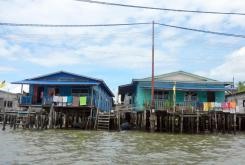 |
| Venice of the East |
4. Water or petrol? The latter is cheaper
While many associate crude oil as a product of other regions, crude oil and natural gas production account for 65 per cent of the gross domestic product and 95 per cent of the exports. It costs more to buy a 1½-litre bottle of drinking water (S$1) than a litre of petrol (52 Singapore cents), according to some reports.
5. A first for many
Maziah Mahusin had the honour of being the country’s first woman athlete to represent her country at the Olympics. In 2012’s London Olympics, Maziah represented Brunei in the women’s 400m race. Despite not being the fastest runner, it did not take away from the pride of being a pioneer for women in sports.
CAMBODIA
6. Khmer architecture is modern
French-educated Cambodian architect Van Molyvann led a profound period of architectural change between Cambodia’s independence in 1953 and 1975, during which he combined elements of the modernism of the 1950s and 1960s with traditional Khmer elements to create Khmer architecture. These elements included the use of new construction material or reinforced concrete and the elevation of buildings on stilts. The monuments, commissioned under King Norodom Sihanouk’s patronage, celebrate independence and symbolise hopes for a modern future. While many have been torn down, some New Khmer Architecture masterpieces remain, including Phnom Penh’s Olympic Stadium, the Chaktomuk Conference Hall, the Royal University of Phnom Penh and the Cambodiana Hotel.
7. Global leader in gourmet pepper
On Cambodia’s southern coast, Kampot province’s mineral-rich red earth and salty coastal winds create exceptional growing conditions for pepper. The red, green and white varieties are the favourite of chefs worldwide, particularly red, which is used in France for pastry. Last year, the European Union gave pepper from Kampot province its seal of approval with the “protected geographical indication” status, putting it in the same ranks as champagne, Parma ham, Gorgonzola cheese and more.
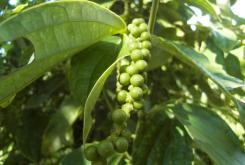 |
| Gourmet pepper |
8. Once ASEAN’s rock ‘n’ roll capital
In the 1960s, Phnom Penh was the swinging centre of South-east Asia thanks to home-grown rock bands and pop singers who embraced the era’s surfer and psychedelic sounds. Many artists were later killed under the Khmer Rouge, but musicians and film-makers in recent years have renewed interest in the era, with the 2015 documentary Don’t Think I’ve Forgotten, for instance.
9. The reversing river
A lake named Tonle Sap in Cambodia has a reversing river every monsoon season, with waters flowing upstream back into it. This is caused by an increase in water volume from the Mekong river in the monsoon season, which exceeds the river’s ability to empty into the sea. This water then flows into adjacent tributaries, resulting in the reversed flow of the river. Residents have made this annual flooding a part of life, harvesting carp and catfish stranded in small pools of water.
10. Pangolin rehab centre
The rare and shy pangolin is the only known mammal with scales. These nocturnal animals live off a diet of ants and termites, which they catch with tongues that can be longer than their bodies. They are one of the most trafficked animals in the world. An estimated 100,000 pangolins are captured every year, and they are killed for their meat and scales. The Pangolin Rehabilitation Centre was opened near Phnom Penh in 2012 to protect those no longer able to get by in the wild.
INDONESIA
11. Heard of Chicken Church?
Hidden on Punthuk Setembu hill in Magelang, a few hours’ drive from Yogyakarta, is an abandoned prayer house built in the shape of a crested dove. Thousands have been flocking to see the building after it was featured in the box-office romantic hit drama Ada Apa Dengan Cinta? 2. The spot used to be a well-kept secret where photographers got an overview of Borobudur Temple, but now offers tourists an Instagram moment at sunrise.
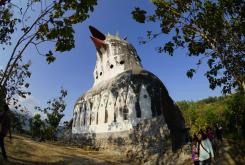 |
| The Chicken Church |
12. Teen-love movie series still draws crowds
Ada Apa Dengan Cinta? is one of Indonesia‘s most watched movies and marked the re-awakening of the movie industry in Indonesia at the turn of the century. Produced by Miles Films in 2002, the coming-of-age teen movie brought the public back to the cinemas and the film stayed on screen for months. Its sequel, released in February last year, saw most of the cast return. Producer Mira Lesmana hopes to complete the finale, Ada Apa Dengan Cinta? 3, in the next few years.
13. Durian hot spot
Jakarta may be known as the Big Durian, but the King of Fruit is the tourism icon of Medan, in North Sumatra. The city has several 24-hour durian stalls, but one – Durian Ucok – stands out and draws tourists from all over the region. The stall will replace your durian free of charge if it does not taste right.
14. Indonesians speak Esperanto
The language, created by Polish physician L.L. Zamenhof in 1887 to encourage people from different countries to talk to one another, is spoken in many parts of Indonesia. Until the 1960s, a club of Esperantists published bulletins and translated books and novels to spread the use of the language. A movement to widen its use has been more noticeable since 2004.
15. Largest gold mine
The Grasberg mine in remote Papua is said to be the largest gold mine in the world. It was discovered by accident in 1936 by Dutch geologist Jean Jacques Dozy. He set out to scale the region’s highest glacial peak and discovered an interesting rock with green streaks, which was found to have high amounts of copper and gold. A company called Freeport Sulphur proceeded to develop the area for mining. While the mine has brought great wealth to these corporations, there is increasing concern about the welfare of the Papuans. Indonesian President Joko Widodo has hastened development efforts and initiated a series of massive infrastructure projects.
LAOS
16. Find one of the world’s top Buddhist monuments
Originally built in the third century at the same time Vientiane was established, That Luang stupa is the symbol of Laos. It was built to house the bones of Lord Buddha, but the original structure was renovated on the orders of King Saysetthathirath when he moved the Lao capital from Luang Prabang to Vientiane in 1560. The stupa is one of the world’s must-see Buddhist monuments.
17. Plain of Jars
Mystery still surrounds the origins of the stone vessels at the Plain of Jars. While some believe the jars were built to store human remains, others theorise they were used to boil liquid during the Khoun Cheuang period in the sixth century. Jar Site 1 is the more popular of the two sites in Xieng Khouang province. The site counts 331 jars, including the largest single jar, said to have been the victory cup of Khoun Cheuang who, according to local legend, liberated the local people from oppressive rulers.
 |
| The Plain of Jars |
18. Morning alms
Alms-giving early in the morning in Luang Prabang province is a fascinating activity for visitors, who get up very early to gather along the roadside with rice, food and sweets to give to passing monks.
19. One of the world’s most-bombed countries
Laos is regarded as one of the world’s most-bombed countries, with the United States dropping more than 270 million cluster bombs on it between December 1964 and March 1973. This number is equivalent to dropping a full plane cargo load every eight minutes, 24 hours a day, for nine years, according to the world atlas.
20. ASEAN’s geological wonder
A huge cave in Konglor village in Khounkham district, Khammouane province, attracts thousands of visitors. The Konglor Cave is about 7.5km in length – the longest in the country – and 80m to 100m wide.
MALAYSIA
21. Catch world’s biggest flower at Gunung Gading
Mount Kinabalu in Sabah comes to mind at the mention of “mountains” and “Malaysia”. But the Gunung Gading National Park in neighbouring Sarawak also warrants a visit. The mountain, named after the legendary Princess Gading (a guardian of three mountain peaks), is touted as one of the best places in the region to see a Rafflesia in bloom. It is said to be the largest and most beautiful flower in the world. Home to a range of wildlife, the park has three nature trails.
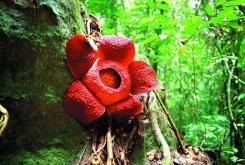 |
| A rafflesia in bloom |
22. ‘Rice’ and shine at Kedah Paddy Museum
Malaysia’s agrarian history is carefully curated in the country’s premier padi museum – and only the fourth padi museum in the world after Japan, Germany and the Philippines. Located in Kedah, the country’s “rice bowl state”, this three-storey building features exhibitions on padi cultivation in Malaysia and around the world.
23. Food-for-thought artist
“Eye candy” would probably best represent what Malaysian food artist Samantha Lee does. A busy mother of young children, Lee started devising all sorts of quirky lunch box meals for her children to encourage them to eat well, fashioning scenes from fairy tales like Little Red Riding Hood and cartoons like SpongeBob SquarePants from food. Lee has over 700,000 followers on her Instagram account @leesamantha and has been featured on E! Online and The Rachael Ray Show.
24. Jungle Bird cocktail
Rum, Campari, lime juice, pineapple juice and syrup – these simple ingredients make up the Jungle Bird, an internationally renowned classic cocktail that was created in Kuala Lumpur. Concocted in 1978 in the Aviary Bar at the old KL Hilton, every cocktail bar in KL worth its salt (and bitters) knows how to serve it.
 |
| Jungle Bird cocktail |
25. Cutting-edge gaming connection
Malaysians are used to seeing local gamers compete in eSports tournaments around the world, but how many know that there is a local connection to the gaming equipment they use? The all-Malaysian arm of Taiwanese company Pixart Imaging Inc designed the most important component in popular gaming mice such as the Logitech G502 and G900, as well as Razer’s Deathadder and Abyssus – the optical sensor that gives them the sheer accuracy needed for gaming.
MYANMAR
26. Catch the pya zat before it’s gone
Pya zat, Myanmar’s traditional drama, is on the verge of extinction due to the influence of foreign cultures. The modern form of pya zat emerged in the late British colonial period with films. The shows that used to last three hours are now down to two and are performed mostly in rural areas. From preaching morality, these shows now dwell on laughing away the stresses of daily life.
27. A breathtaking cave in an amazing landscape
The Saddan cave, one of the biggest in Myanmar, is dotted with several images of Buddha. It takes about 20 minutes to cross the cave, if the bats do not deter you, and the exit opens into a lake, offering a view of a landscape that will enchant you.
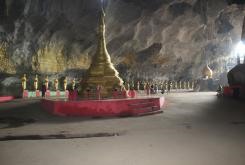 |
| The Saddan cave |
28. A spot to remember a romantic legend
Than Daung Gyi, in Kayin state, a four- to six-hour train ride from Yangon, is best known as the place of Myanmar Christians. It is also famous for the legend of Prince Saw Thaw Oh Khwa and Princess Naw Bu Baw, who were deeply in love. Though they got married, the prince’s side did not like Princess Naw Bu Baw as they thought she was a witch. After the prince died in battle, she was imprisoned in a rock cavern and eventually died. Local people believe their spirits still wander hand in hand through forests.
29. Top collection of Buddhist mural paintings
The Lokahteikpan Temple, in Bagan, is said to have the best collection of Buddhist mural paintings in South-east Asia. These were discovered as recently as 1958. The murals emphasise educating people on Theravada Buddhism. They depict the Eight Scenes of the Buddha.
30. Not just a ball game
Chinlone is perhaps the country’s most famous traditional sport. Players in teams of six pass the ball back and forth using their feet, knees and heads as they walk around a circle. A player goes into the middle alone and creates a dance of different moves. There is no scoring in chinlone – players are judged on how beautifully they play the game.
PHILIPPINES
31. Island in a lake on an island in a lake
While Vulcan Point may no longer be the largest specimen of its kind, it is still a marvel of nature to experience. Vulcan Point is an island in a lake on an island in a bigger lake. The lake surrounding Vulcan Point, Taal Lake, is a volcanic one formed after eruptions sealed the water body. After centuries of rainfall, it slowly desalinated and become host to a plethora of species that slowly adapted to the change in the salinity of the water. The volcano holding all of this, the Taal Volcano, is the second-most-active volcano in the Philippines.
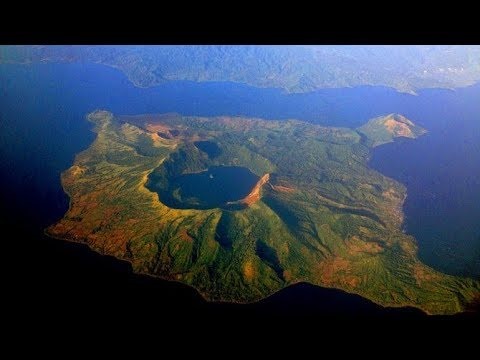 |
| Vulcan Point |
32. Mammal with largest eye-to-body ratio
The Philippine tarsier has the largest mammal eyes, in terms of ratio to the body, according to the Guinness Book of World Records. The diminutive animal is also one of the smallest primates in the world, ranging from 8.5cm to 16cm in height. Despite its small frame, the skull houses a pair of eyes that are 1.6cm in diameter. As a result, its eyes are unable to turn in their sockets. A special adaptation allows its neck to turn 180 degrees in either direction. Furthermore, its eyes can dilate almost completely in poor light conditions, allowing the tarsier to see at night.
33. Mother of all pearls
The former holder of this accolade, the Pearl of Lao Tzu, was also from the Philippines. The current title-holder, the 34kg Puerto Princesa pearl, was kept under its owner’s bed for more than 10 years. It was only when he moved to another part of the province that it came to light – when the man handed the pearl to his aunt, a tourism officer. The pearl was then put on display as a tourist attraction at the local town hall.
34. Patent for karaoke
While many are aware that the karaoke machine was a Japanese invention, the patent is in fact held by Filipino inventor Roberto del Rosario. He created the Karaoke Sing-Along System in 1975, which contributed to the spread of the trend. Although the karaoke was created by Japanese musician Daisuke Inoue a few years earlier, both men have been credited as noteworthy in its history.
35. ‘Boondocks’ is Filipino
The expression “boondocks”, used to refer to isolated places or the countryside, has roots in the Tagalog word “bundok”, which means mountains. It is believed that the word was adapted into English by American soldiers.
SINGAPORE
36.The Lion city’s name was possibly inspired by a tiger
Singapore’s Sanskrit name Singapura, which means ’lion city’, is believed to have been given by Sang Nila Utama, a SriWijayan prince from Palembang, who spotted a beast when he landed on the island, which was then called Temasek. But lions do not exist on the island naturally and it is believed that he could have mistaken the beast for a lion, when it may have been a tiger, instead.
37. Made up of more than 70 islands
Did you know that Singapore was actually made up of more than 70 islands? The main island is about 42 km from west to east and about 23 km from north to south. Some of the lesser known islands include Pulau Satumu, which loosely translates to One Tree Island, which houses the Raffles Lighthouse, which was built in 1855 and Pulau Seking, which at less than a kilometre long, is one of the smallest of Singapore’s southern islands. And there’s also Pulau Hantu, with "Hantu" the Malay word for ghost.
38. Home to the world’s youngest app developer
The world’s youngest app developer, Lim Ding Wen, created his first app at nine in 2009. It is a drawing app named Doodle Kids. Working from an Apple IIGS computer, he wrote it in a few days, before porting it for the iPhone and releasing it for free on the App Store. He is now an aspiring game developer with more than 20 apps under his belt.
 |
| Lim Ding Wen |
39. Who is Old Chang Kee? The man behind the name
There is no such person. The man behind the famous snack chain is Hainanese immigrant Chang Chuan Boo, who set up shop in 1956. He gained fame for his curry puffs at a coffee shop near Rex Cinema. Locals referred to the snacks as the “Rex Curry Puff”. The business was bought by Han Keen Juan in 1986, who transformed the small shop in Mackenzie Road to the chain of stores today. Old Chang Kee was named one of the world’s 20 best fast-food franchises by United States-based Travel & Leisure magazine in 2012.
40. Republic’s first fast-food outlet
For many Singaporeans living in the 1970s, their first encounter with fast food was A&W (Allen & Wright). It was the first fast-food chain to open here, bringing in classics such as the Coney Dog, curly fries and the eponymous root beer from the US. A&W ceased its operations here in 2003.
THAILAND
41. World’s smallest mammal
Weighing just 2g and measuring 29mm to 33mm in length, Kitti’s hog-nosed bat (Craseonycteris thonglongyai) is the world’s smallest bat species and also arguably the world’s smallest mammal species. First known to the world in 1974, the tiny bat species lives in a handful of limestone caves along rivers in Kanchanaburi province in western Thailand, foraging for insects in the surrounding forests. The colonies have around 100 bats per cave, with females producing just one offspring annually. Sadly, the bat – also known as the bumble bat – is classified as being at risk of extinction.
42. Thailand’s national dish?
Phat thai, also known as pad thai and literally meaning “fried Thai style”, is a stir-fried rice noodle dish, commonly cooked with eggs, tofu, shrimps, tamarind pulp, shallots, chilli and fish sauce. For many visitors, phat thai is their introduction to Thai food and many consider it to be the country’s national dish – although some might contend that tom yum kung takes that honour. Yet, evidence indicates that it is not even Thai. Bangkok-based celebrity chef McDang, or Sirichalerm Svasti, said in an interview that noodles and stir-frying – the two main elements of phat thai – arrived in Thailand with Chinese immigrants. He did note that the sauces and pastes used are Thai. It turns out that the dish was popularised by military strongman Plaek Phibunsongkhram in the 1930s and 1940s in an effort to create a “national dish” as part of his programme of nationalism.
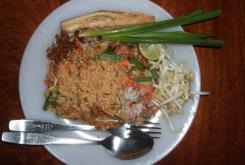 |
| Phat thai |
43. Sombat Metanee, world’s most prolific actor
Sombat Metanee is an 80-year-old legend of the Thai silver screen who, for a time, was recorded in the Guinness Book of World Records as the most prolific movie star, performing in an incredible 617 titles. Introduced to the world of celluloid in 1961, Sombat gained popularity for his good looks, sculpted body and sex appeal. During his heyday in the 1960s and 1970s – the golden era of the Thai film industry – he often worked on several films at the same time, with almost the same hairstyle in each role. Even today, he makes occasional appearances in Thai films and TV soaps, as well as TV commercials.
44. Bangkok’s ‘gourmet’ fresh market
Most wet markets in Bangkok, or anywhere in Thailand, are wet, smelly and crowded places where hygiene and quality are not the top priorities. Not so with Or Tor Kor Market (pronounced Aw Taw Kaw), the Marketing Organisation for Farmers, in northern Bangkok – right next to the world-famous Chatuchak Market. The bright and airy market recently ranked fourth in a 2017 CNN survey of the top 10 best fresh markets in the world, alongside the likes of La Boqueria in Barcelona, Tsukiji Fish Market in Tokyo and Union Square Farmers Market in New York City. While most of the fruit and vegetables on display look noticeably superior to those found elsewhere in Bangkok, they are also considerably pricier.
45. What’s in a nickname?
Unlike people from other nations, almost all Thais have a nickname. Thais generally address their family members, friends and colleagues by their nicknames instead of their “official” names. There are no specific rules on how parents choose nicknames for their children. Most likely, it is just a favourite name and, as a result, nicknames today are immensely varied. Nicknames based on the names of animals are among the most popular, such as Nok (meaning bird), Kai (chicken), Moo (pig), Kung (shrimp), Pla (fish), Kwang (deer), Tao (turtle), Kob (frog), Ped (duck), Mod (ant), Singhto (lion) and Norn (worm). Some nicknames clearly indicate the gender of the person, such as Chai (male), Ying (female), Boy, Man and Num (young man), while others suggest the order of birth, for example, Ton (beginning), Neung (first or number one), Yai (eldest), Lek (youngest) and Nong (mostly youngest sister). Car brands like Benz and Porsche have become popular nicknames among boys.
VIỆT NAM
46. Hands down a stunning walkway
In the mountains of central Việt Nam, a colossal pair of hands lifts a golden walkway high above the clifftops, as if the mountain itself has sprouted limbs.
Cầu Vàng, or the Golden Bridge, in the Bà Nà Hills, near Đà Nẵng city, has attracted scores of tourists since it opened in June.
The 150m-long pedestrian walkway was designed by Hồ Chí Minh City-based company TA Landscape Architecture. The glimmering structure sits at more than 1,000m above sea level, offering tourists uninterrupted views of the majestic landscape beneath.
47. An ethnic group facing extinction
The Si La ethnic group is among those with the fewest people in Việt Nam. With a population that is fewer than 1,000, the Si La people live mostly in Mường Tè District in the northern province of Lai Châu and in Mường Nhé District in the northern province of Điện Biên. The Si La people’s language belongs to the Sino-Tibetan language family, but its usage is dropping and the group has no written language. Hundreds of years ago, the group’s ancestors lived in Lhasa, the capital of today’s Tibet Autonomous Region of the People’s Republic of China. They then migrated to Laos before coming to Việt Nam. Men in the group used to dye their teeth red, while women dyed their teeth black, but that custom has died out. The costumes of the Si La women are made with metal coins attached to the chest. Their headscarves indicate their ages and marital status. The Si La people customarily marry twice. The second ceremony is held one year after the first.
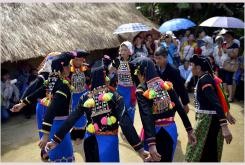 |
| The Si La ethnic group |
48. Only mosque in the north
The only mosque in northern Việt Nam, named Al-Noor Masjid (The Mosque of Light), is at 12 Hàng Lược Street in Hà Nội’s Hoàn Kiếm District. Over the past 100 years, the mosque has been the destination for Vietnamese and foreign Muslim worshippers. At the beginning of the 19th century, Indian businessmen came to Viet Nam and some settled here. In 1885, they started building the Al-Noor mosque, which is deeply influenced by Indian architecture and culture. The mosque was officially inaugurated in 1890.
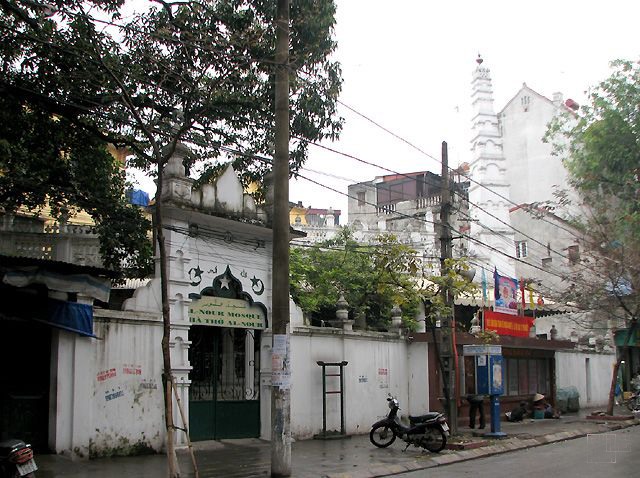 |
| Al-Noor Mosque temple in Hà Nội, Việt Nam. File photo |
49. Monopoly on squid eggs
Every coastal locality in Việt Nam offers visitors culinary gifts from the sea, but the southernmost province of Cà Mau has a monopoly on squid eggs. The province’s fishermen catch squid at night. The haul is put on ice to keep it fresh. The next morning, the eggs are taken out and the flesh is dried in the sun. A popular squid egg dish involves mixing it with duck eggs, minced pork and pig’s liver. The mixture is flattened into small patties, which are sun-dried and taken home. Squid eggs are a luxury because for every 10 to 12kg of fresh squid, you get only 1kg of eggs.
50. Underwater sea path
Located in Văn Phong Bay (60km from Nha Trang City in the central province of Khánh Hòa), Điệp Sơn Island is an increasingly attractive destination for many visitors, drawn by its beaches and especially its beautiful “underwater sea path” connecting two islets. Depending on the time of the visit, the path is either partially submerged in the crystal waters (in the morning during high tide) or completely dry and visible (in the afternoon during low tide). The rustic island consists of three small separated islets and is home to about 100 households who use it as a base for fishing trips.
COMPILED BY: KENJI CHONG, PAUL YEE & JASEN LO/THE STRAITS TIMES
SOURCE: ASIA NEWS NETWORK, THE JAKARTA POST, VIENTIANE TIMES, THE STAR, MYANMAR
ELEVEN, THE STRAITS TIMES, THE NATION, VIET NAM NEWS AND ONLINE RESOURCES.

